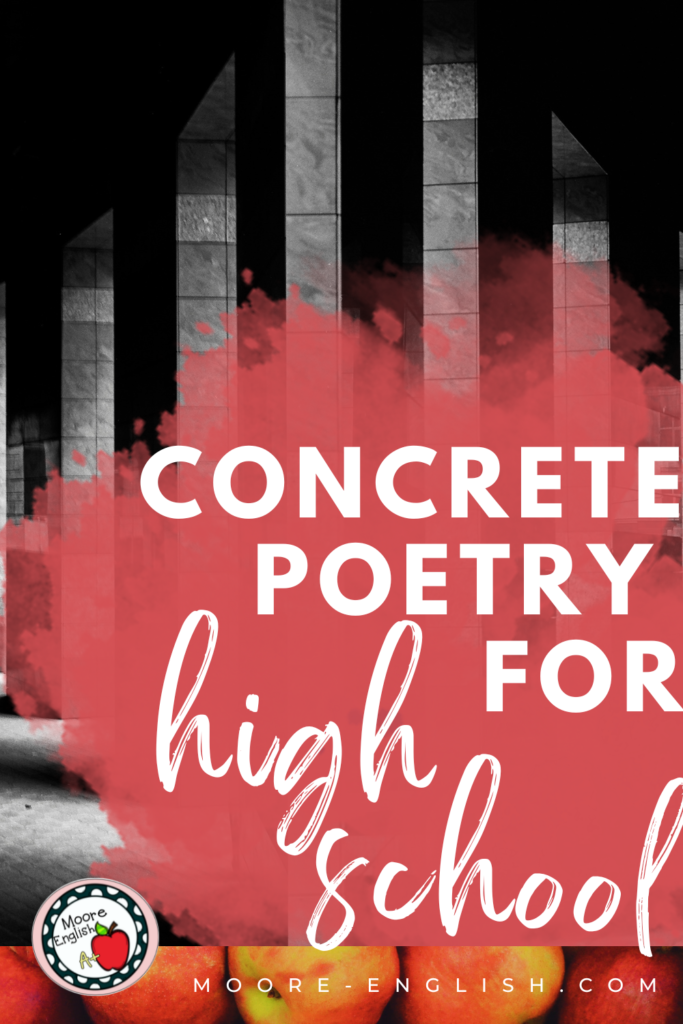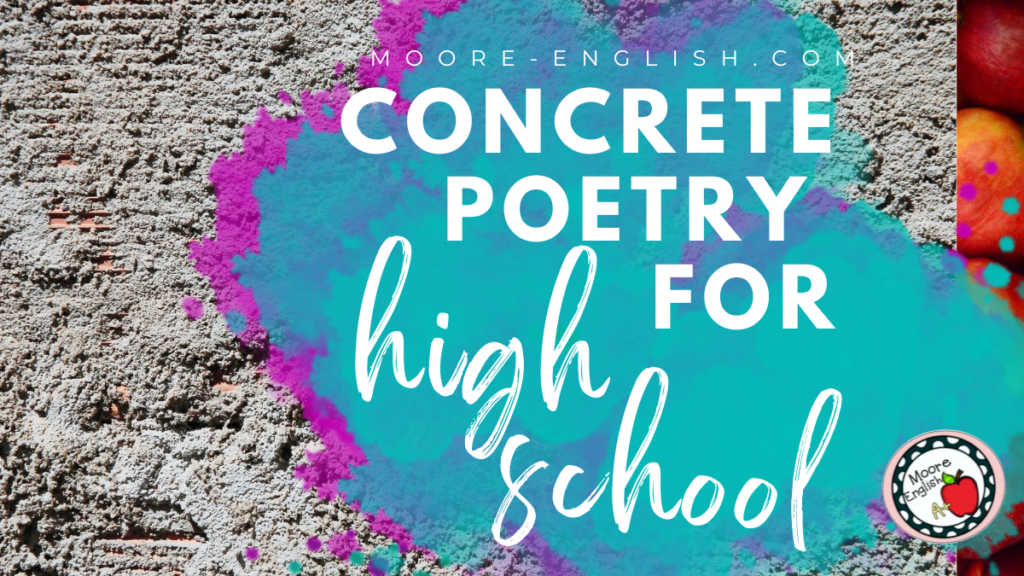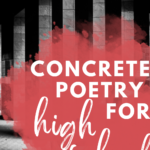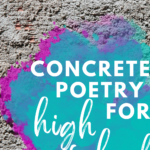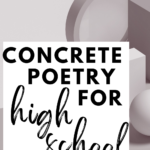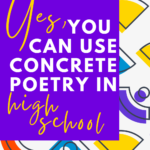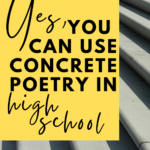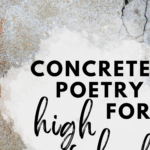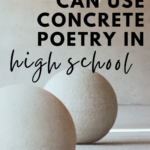Concrete poetry is a tricky topic in high school ELA. On one hand, students like concrete poetry, so they’re engaged and motivated. On the other hand, some folks will judge you for using “easy” poetry or “inauthentic” poetry.
Well, sucks to them. (I suspect these are the same folks that think graphic novels aren’t books.)
Here are some more professional responses to critics of teaching or using concrete poetry:
- First, concrete poetry is all about an author’s choices, so it’s a perfect way to discuss author’s craft.
- Second, the shape of a concrete poem is probably symbolic, so this is a good time to emphasize the relationship between text structure and author’s purpose.
- Third, concrete poetry makes students curious, so they are engaged in the material. The shapes become accessible to everyone. Even if a student struggles with the language, they can talk about the shape.
- Finally, concrete poetry is something students can try. With concrete poetry, students can try their hands at creation, which is the highest of Bloom’s levels.
This post this post may contain affiliate links. Please read the Terms of Use.
Starting Out with Concrete Poetry
One argument against concrete poetry is that it’s “inauthentic” or only exists in classrooms. Surely, some say, no “real” poet uses shapes and symbols in their work?
In response to this argument, I offer the concrete poem “Social Distancing” by Juan Felipe Herrera. Read it here.
This is a great poem because it’s short and immediately relevant for students. Herrera calls this a “starburst poem,” and it’s a perfect opportunity to discuss shape. Why did Herrera make this shape choice? What does it symbolize? How does the shape help the author communicate this purpose?
After students read the poem, teachers call follow up by asking students to write their own concrete poems about social distancing. What shape would you choose to represent social distancing? Even if there’s not time for students to create their own poem, this question can generate some powerful discussion.
Crafting Concrete Poetry
Students are usually eager to try their hand at concrete poetry. Furthermore, students don’t have to read a concrete poem to create one of their own. Here are some poems that lend themselves to a concrete response even if they, themselves, are not concrete.
- “Home Court” by Jose Olivarez is the first poem that comes to mind. Students can respond to the poem by creating a concrete poem that looks like a basketball or basketball court. Read it here.
- “Complaint of El Río Grande” by Richard Blanco is another good candidate. The river is such a central symbol in this poem, and students could use that shape to guide their response. Read it here.
- “America” and “I Hear America Singing” by Walt Whitman are both short. Students can respond to either of these poems by creating a concrete poem in the shape of the United States. Read them here.
- Similarly, “The New Colossus” by Emma Lazarus, “Three Liberties” by Julia Alvarez, and “lady liberty” by Tato Laviera all focus on the Statue of Liberty. Students could use this shape or even the shape of her crown to respond to the poems. Grab all three of these poems in this bundle!
Challenging Poems
Another criticism of concrete poetry is that it’s too easy. If rigor is the concern, here are some options for making sure your study of concrete poetry is challenging.
- First, “Easter Wings” by George Herbert has such an interesting shape. I like this poem because it shows how concrete poetry has preserved through the years. Nevertheless, this is a challenging bit of text that should quall any criticism about rigor. Read it here.
- Similarly, “Slam, Dunk, & Hook” by Yusef Komunyakaa is another poem about basketball. However, it’s a very long poem with many layers. Like “Home Court,” this would be an opportunity to respond with a concrete poem in the shape of a basketball. Read it here.
- Finally, “Mercy” by Rudy Francisco and “Allowables” by Nikki Giovanni share a common symbol (the spider). While these are not concrete poems, students could use the information from Francisco and Giovanni’s poems to create a spider-shaped concrete poem. Watch “Mercy” here, and find “Allowables” here.
How do you incorporate diverse forms of poetry in your classroom?

